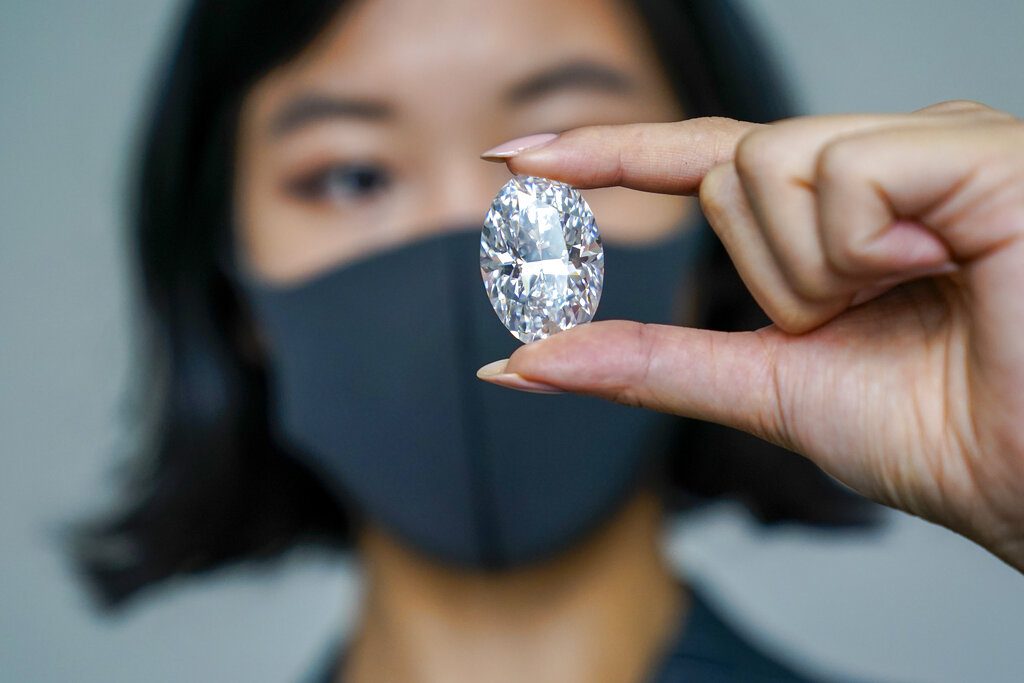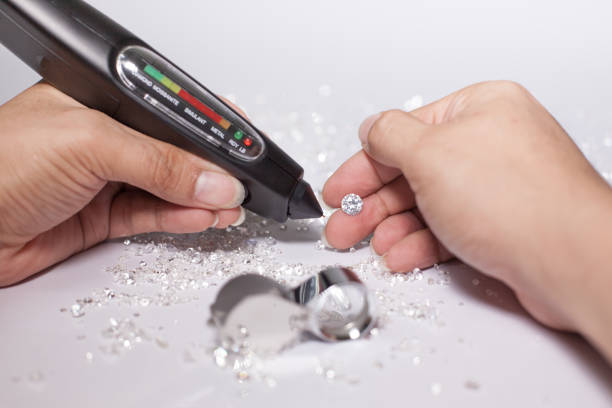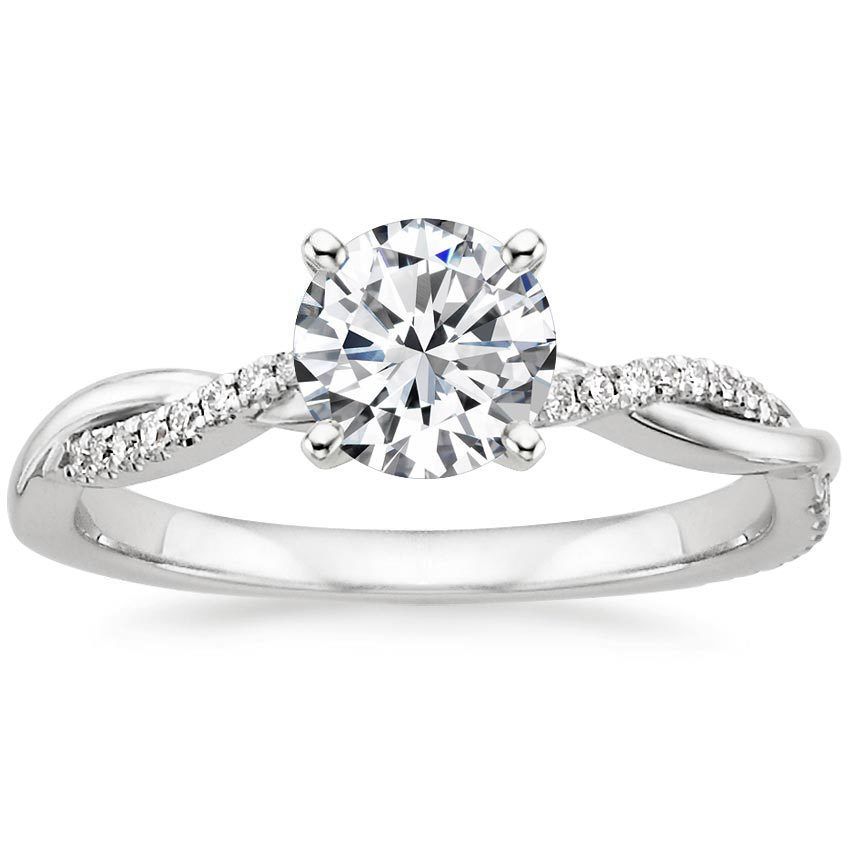Arelab-grown diamondsreal diamondgems? When man-made diamonds were initially introduced to the market, many of you had this question in mind. Diamonds that have been developed in a laboratory by man are known as lab-grown diamonds. Chemical vapor deposition processes, which are used to grow them, can be used to create them. Here in this article, you will know important notes about these cost-effective but classy real diamonds.
The Contribution Of Lab-Grown Diamonds To The Fashion Industry
Although lab-grown diamonds are not a new idea, they are rising in popularity in the fashion world. Diamonds are mined from the ground, and their cut, color, clarity, and carat weight determine their quality. A round brilliant cut, often known as a "brilliant" shape, is the best diamond cut. Diamonds that are generated in a lab do not need to be mined from the ground.
Lab-grown Diamonds Statistics
The global lab-grown diamonds market was valued at $19.3 billion in 2020 and is expected to reach $49.9 billion by 2030, growing at a 9.4 percent CAGR between 2021 and 2030. In terms of lab-grown diamonds market share, the CVD category dominated in 2020 and is likely to maintain its dominance during the forecast period. During the pandemic, the synthetic diamond reached much more than USD 90 per ton.
Recent Development
- De Beers Group plans to establish a factory in Oregon in 2020, producing 500,000 synthetic carats annually by 2021.
- In December 2018, Heyaru Engineering announced a USD 31.5 million investment in a Lommel synthetic diamond company. Also, in the next five to ten years, Lommel will become Europe's largest "diamond factory."
- Brilliant Earth, Clean Origin, and Vrai were among the companies offering synthetic diamondsin September 2017.
How Diamonds Grown In A Lab Are Transforming The Fashion Industry
Lab-grown diamonds are becoming increasingly popular in the fashion industry, which is evolving at a rapid pace. They are a sustainable and environmentally aware alternative for designers and brands. Since its inception in 2014, the laboratory-grown diamond sector has experienced exponential growth. The lab-grown diamonds used by luxury labels such as Gucci, Dior, Tiffany & Co., and Cartier are now being used in their jewelrycollections. And this is only the beginning of the story.
When Did They Start Creating Lab-grown Diamonds
According to available information, General Electric (GE) produced the first batch of lab-created diamonds in 1954. Fast forward to the 1970s, when gem-quality lab stones became readily available on the market. Commercially speaking, however, it was not until the 1980s that high-quality man-made diamonds became widely available.
However, the initial lab-grown diamonds could only be distinguished by the way they were cut and polished, making it difficult for jewelers to determine whether or not the diamond had been developed in a laboratory.
Who Invented Lab Diamonds
Howard Tracy Hall was an American physical chemist who was a pioneer in the study of synthetic diamonds, utilizing a press he designed.
Can A Jeweler Tell If A Diamond Is Lab-Created
No. Even to a trained eye, Ada's lab diamonds and natural diamonds of the same quality appear to be identical in appearance. When used in conjunction with traditional jewelers' tools, such as microscopes or loupes, it is impossible to distinguish between an artificially created diamond and a natural, mined diamond.
Why Lab-grown Diamonds Are Better
Because they are not mined, lab-created diamonds are better for the environment than mined diamonds. The mining of diamonds has a substantial negative impact on the environment. Between 88,000 and 176,000 pounds of soil must be filtered through before a single 1-carat diamond can be discovered.
They are less expensive
With lab-grown diamonds, you can receive a larger or higher quality diamond for the same price as a smaller or lower-quality diamond. Upgrading the carat, cut, clarity, or color of a lab-grown diamond engagement ring, or creating the ultimate lab-grown diamond engagement ring, is a surprisingly reasonable task. Due to the fact that lab-made diamonds can be up to 40% less expensive than typically mined diamonds of the same quality, they are becoming increasingly popular.
More Ethical Than Traditional Mining
It is well known that traditionally mined diamonds are unethical, and this is a well-founded perception. Extraction of mined diamonds from the soil has a significant environmental impact and requires a significant amount of energy. Diamonds have been used to support wars in Africa. Due to the fact that lab-grown diamonds are made in a controlled setting, the ethical difficulties that are associated with mined diamonds are simply non-existent in this case.
Diamonds Manufactured In A Laboratory Are Identical To Actual Diamonds
They are technically the same because lab-grown diamond is made entirely of pure crystallized carbon in the isometric cubic structure. Diamonds created in a laboratory and diamonds mined in the field have the same chemical, optical, and physical qualities. They are created in a controlled environment under parameters that are comparable to those found in nature (pressure and temperature).
Will Lab Diamonds Pass Diamond Tester
Yes! When tested using a diamond tester, lab-grown diamonds come back positive because they are comprised of crystalline carbon, much like mined diamonds. However, some high-pressure high-temperature diamonds may include imperfections that are not visible to the human eye.
What Is The Largest Lab Grown Diamond
The 155-carat disc diamond is widely regarded as the world's largest laboratory-grown diamond. As a result of boosting its production size capabilities from 6-carats to more than 9-carats in recent years, Chemical Vapor Deposition or CVD has closed the gap between it and High pressure and High temperature (HPHT). In fact, the world's largest lab-grown diamond is a huge 155-carat disc diamond that was created using CVD technology.
Can Diamonds Made In A Lab Replace Natural Ones
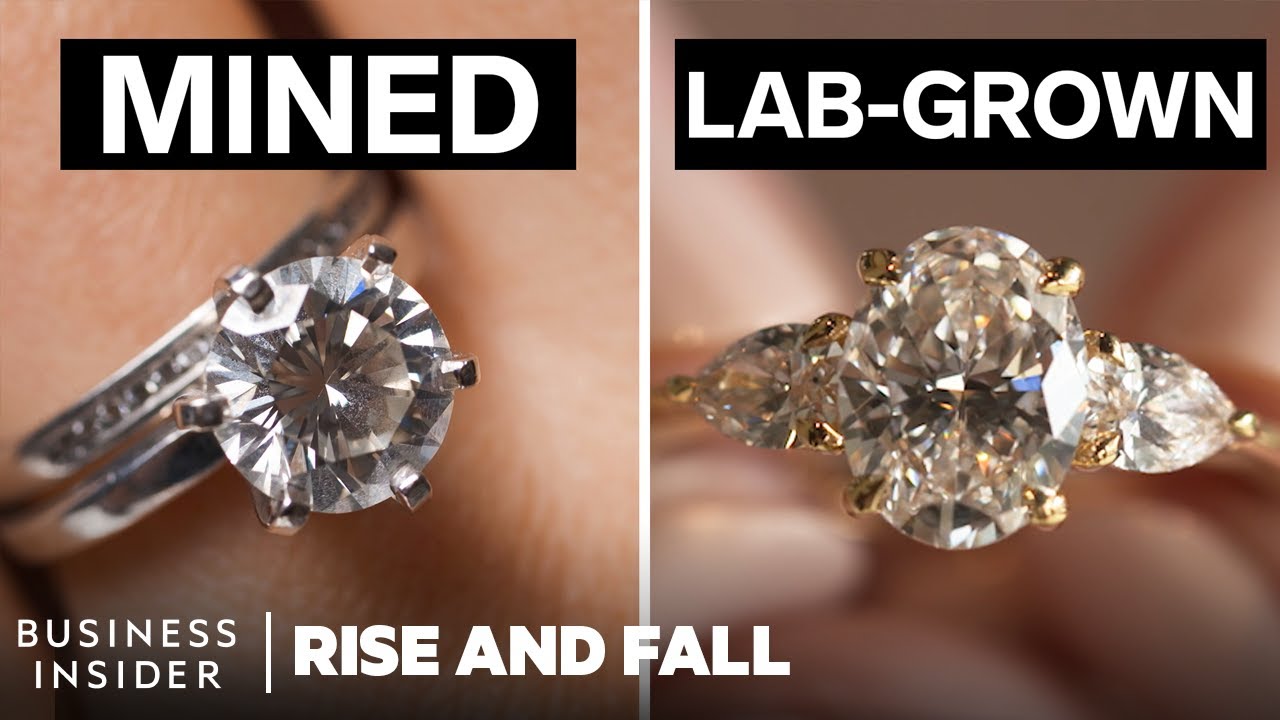
Can Diamonds Made In A Lab Replace Natural Ones? | Rise And Fall
The diamond mining industry has promoted its diamonds as emblems of loveand romance for many years. However, there was an industry hidden beneath that narrative, one that was related to conflict, corruption, and colonization. Diamonds may now be grown in a laboratory at a tenth of the cost of natural diamonds. Is this the way diamonds will be mined in the future?
Types Of Lab-Grown Diamonds
You may see below the following types of lab-grown diamonds:
Simulant Diamonds
Simulant diamonds are the closest thing humans have to genuine diamonds in terms of appearance. The simulant diamonds differ from mined diamonds in terms of their chemical and physical properties. These diamonds are formed from a variety of alternative materials and are not particularly unique in their creation.
Diamond Nexus Stimulants
These diamonds are created by combining carbon with other components to form a new substance. Because of their extraordinary durability, these stimulants come with a three-year money-back guarantee.
Cubic Zirconia Stimulants
Zirconium dioxide is used in the production of these diamonds. They are the least lasting of the stimulant diamonds, and as a result, they are also the most affordable.
Mossianite Lab Created Gemstone
These stones are made of silicon carbide, which is a synthetic material. Mossianite is an extremely powerful stimulant, which contributes to its high price, which is also relatively high. Mossianite has a distinct appearance due to the fact that it is a gemstone.
Cultured Diamond
Cultured diamonds are diamonds that have been grown from the ground up in an environment that is similar to the environment found in diamond mines. These diamonds are created in a laboratory and exhibit physical and chemical features that are very comparable to those of real diamonds.
HPHT Diamond
High-pressure high temperature diamonds are created in a similar setting to mined diamonds. There are three basic press designs used to make synthetic diamonds.
CVD Diamonds
Chemical vapor deposition grows diamonds from a hydrocarbon gas combination. This approach is preferred for industrial applications, flexibility, and process simplicity. CVD diamond growth allows development over a variety of substrates and vast areas. It also helps control chemical contaminants.
Petite Twisted Vine Diamond Ring At $1,250
Ring Details And Accent Gemstones
- 18K white goldmetal ring
- 2.5 mm average width
- Rhodium finish
- Round shape
- 0.12-carat total weight
Customer Reviews
Odily's Fiancé said: "I have received many compliments about this ring and I am proud to have chosen it. My Fiancée absolutely loves it!"
Nelson mentioned: "Fiancée loved it. Very nice design and feel more secure with the lifetime warranty."
Abhi's Fiancée commented: "This is seriously my dream ring. The ring is beyond everything I could ever imagine. Thank you Brilliant Earth for such an amazing ring. Totally in love with my ring and it is definitely very sparkly!"
Aria Diamond Ring At $1,190
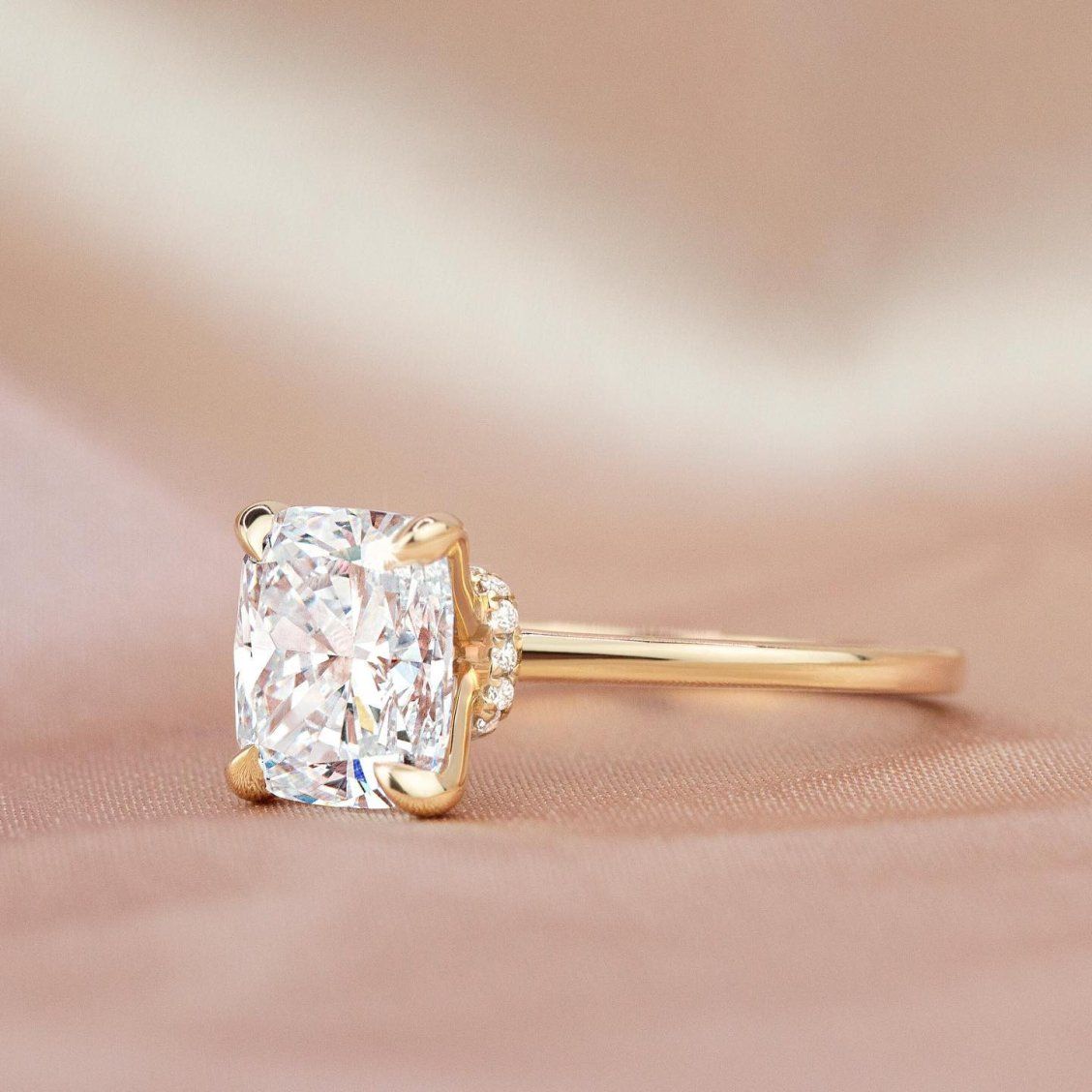
Ring Details And Accent Gemstones
- 18K Yellow Gold
- 1.5 mm average width
- Claw Prong Basket
- Pear-shaped diamond
- .09 carat total weight
Customer Reviews
CG commented: "The ring is perfect! I got a 9x7 oval moissanitewith yellow gold and it's better than I imagined!"
Joe said: "Sale felt low pressure, ring was exactly what I wanted. Flawless from start to finish."
LM admitted: "A showstopping ring. Unique, sturdy, and well-made. This is something I am proud to wear on my hand for the rest of my life. The delicate setting accents really focus attention to the main diamond, yet still, add a nice flourish."
Conclusion
Lab-grown diamonds offer a once-in-a-lifetime chance for jewelry customers who wish to make a purchase that is both ethical and environmentally responsible. These diamonds are obtained in a reasonably inexpensive manner, and they are not dug in the potentially hazardous conditions of a mine.
In order to determine if a diamond was developed in a lab or not, you must go to a jewelry store and request that the certificate be shown to you. If they decline, it's generally not worth it to pursue it further.
